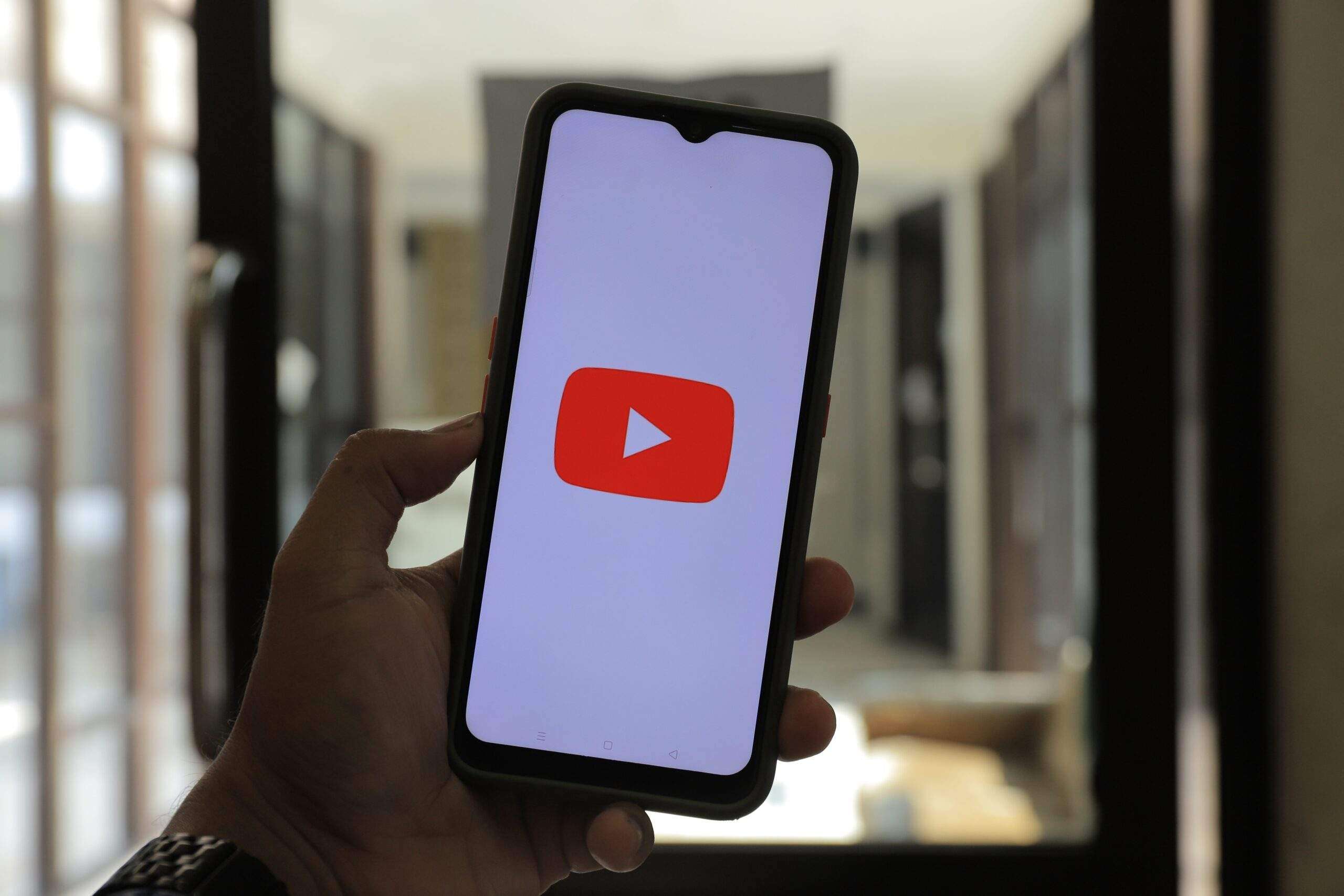Explore the fascinating history of YouTube, the internet phenomenon that revolutionised how we share and watch video content. From its modest beginnings in a dorm room to its present-day dominance, this article unravels the intriguing history of YouTube and sheds light on its transformative impact on the digital landscape.
The Birth of a Digital Vision: YouTube’s Humble Origins
In the vast landscape of the early 2000s internet, where video sharing was a cumbersome and fragmented experience, three brilliant minds—Chad Hurley, Steve Chen, and Jawed Karim—nurtured a visionary idea in the confines of a dorm room. They set out on a quest to completely transform how we interact with video content after becoming frustrated by how challenging it is to find and share videos online. To streamline the process and develop a platform that would democratise video sharing for everyone, they came up with YouTube.
The year was 2005 when YouTube took its first breath, marking a pivotal moment in digital history. It was on February 14, 2005, that Jawed Karim uploaded the platform’s very first video titled “Me at the zoo.” Little did they know that this unassuming video would kickstart a revolution that would reshape the media landscape. The simplicity and user-friendly interface of YouTube quickly captivated early users, setting the stage for the platform’s unprecedented growth.
What started as a modest platform soon gained traction, attracting a community of content creators and viewers hungry for an accessible outlet to express their creativity and consume engaging video content. YouTube’s humble origins in a dorm room became the breeding ground for innovation, laying the foundation for a global phenomenon that would forever change the way we interact, share, and discover video content. The seeds of YouTube’s revolution had been sown, and they were about to flourish in ways that would surpass the wildest expectations of its founders.
A Breakthrough Launch and Early Growth
With its modest origins and a small group of early users, YouTube set out on a journey that would change the face of the internet. The breakthrough moment came on that fateful Valentine’s Day in 2005 when the platform made its official debut. Jawed Karim’s seemingly ordinary video titled “Me at the zoo” became the first-ever uploaded content on YouTube, instantly capturing the attention of curious internet users. Little did anyone know that this unassuming video would be the spark that ignited a revolution in online video sharing.
The news quickly spread like wildfire, and soon everyone on the internet was talking about YouTube. An ever-expanding community was drawn to it by its user-friendly layout, convenience of use, and accessibility to upload and share movies by anyone. People from various backgrounds flocked to the platform in droves, eager to express their creativity, their perspectives, and their connections with others on a worldwide scale. YouTube quickly established itself as the preferred platform for sharing special experiences, showing abilities, and exploring a vast array of unique content.
The early growth of YouTube was nothing short of remarkable. The site experienced exponential growth in both the variety and volume of movies as more and more users joined. From comedy skits to music covers, educational tutorials to heartfelt vlogs, YouTube quickly became a melting pot of ideas, stories, and entertainment. The platform’s democratic nature allowed content creators to find their audience and foster communities around shared interests, paving the way for a new era of digital engagement. With its ground-breaking launch, YouTube ignited a revolution that permanently altered the way we engage with and consume video content.
From Viral Sensations to Global Influence: YouTube’s Pop Culture Impact
YouTube not only revolutionized video sharing, but it also became a cultural phenomenon, influencing popular culture in previously unthinkable ways. It ushered in the era of viral sensations, catapulting ordinary individuals to instant fame and influencing global trends. Memorable videos like “Charlie Bit My Finger” and “Gangnam Style” became household names, captivating audiences with their infectious charm and absurdity. These viral sensations showcased the power of YouTube as a platform that could turn everyday moments into worldwide phenomena, breaking down barriers and connecting people from different corners of the globe.
YouTube became a hub for shared experiences and a breeding ground for trends and challenges that spread like wildfire. Whether it was the Ice Bucket Challenge raising awareness for ALS or the Harlem Shake dance craze that took over social media, YouTube became the catalyst for cultural movements that captured the collective imagination. From catchy tunes to jaw-dropping stunts, YouTube transformed ordinary individuals into overnight sensations, blurring the lines between online and offline worlds.
Beyond individual videos, YouTube played a pivotal role in shaping the entertainment landscape. Traditional media began taking notice of the platform’s influence, leading to collaborations between established celebrities and emerging YouTube stars. The boundaries between mainstream and online entertainment blurred as YouTube creators found themselves starring in movies, hosting talk shows, and even signing lucrative endorsement deals. In addition to serving as a medium for content going viral, YouTube had emerged as an unstoppable force that was also a major participant in the broader entertainment business. It had a significant influence on pop culture and permanently changed how we consume and engage in global cultural discourse.
The Google Era: Acquisition and Integration
YouTube began a new chapter in its existence in November 2006 when the digital juggernaut Google became interested in it. Google’s historic acquisition of YouTube for a stunning $1.65 billion marked the start of the platform’s Google era. This acquisition brought together two digital powerhouses, combining YouTube’s innovative video-sharing platform with Google’s vast resources and technological expertise.
The integration of YouTube into the Google ecosystem marked a turning point for the platform’s growth and influence. With Google’s support, YouTube had access to the infrastructure and assistance it needed to develop quickly and satisfy the escalating needs of its growing user base. As part of the Google family, YouTube gained access to cutting-edge technologies, data analytics, and advertising capabilities that fueled its development into a global phenomenon.
Under Google’s stewardship, YouTube not only maintained its independent identity but also benefited from synergies with other Google products and services. YouTube videos were able to be integrated with Google’s search engine, increasing their prominence and increasing traffic to the platform. The acquisition also made it easier for YouTube and other Google platforms, like Google Ads, Google Maps, and Google Play, to collaborate and cross-promote, expanding the audience and influence of YouTube’s content providers.
The Google era catapulted YouTube to new heights, solidifying its position as the dominant force in online video sharing. The acquisition and integration marked a pivotal moment in YouTube’s history, opening doors to vast possibilities and propelling the platform into an era of unrivaled growth, innovation, and influence.
Empowering Creators: YouTube Stars and the Rise of User-Generated Content
YouTube’s ascent to fame was driven by more than just video sharing; it also enabled producers to reach a worldwide audience and share their skills and passions. It birthed a new breed of digital stars who captivated millions and shattered traditional notions of celebrity. The platform became a launching pad for ordinary individuals to become extraordinary YouTube stars, proving that with a camera, a story to tell, and unwavering dedication, anyone could rise to fame.
YouTube creators like PewDiePie, Jenna Marbles, and Michelle Phan became household names, their channels amassing millions of subscribers and their influence stretching far beyond the confines of the digital realm. These creators carved out their unique niches, whether through gaming commentary, comedic sketches, or makeup tutorials, and built passionate communities around their content. They became relatable figures, accessible and engaging, fostering a sense of connection and authenticity that resonated with viewers on a personal level.
The rise of user-generated content on YouTube revolutionized the entertainment landscape. It shattered the barriers of traditional media gatekeepers, allowing creators from all backgrounds to share their stories, perspectives, and talents directly with audiences worldwide. As a result of the democratisation of content creation, a period of innovation and diversity emerged, allowing people to freely express themselves and find their voices. The next big celebrity could appear on YouTube from anywhere in the world, and preexisting conventions could be questioned, changed, and redefined. On this platform, creativity knew no limitations.
Tackling Copyright and Monetization Challenges
As YouTube continued to soar in popularity and attract an ever-growing community of creators, it faced significant challenges in navigating copyright concerns and developing a sustainable monetization model. YouTube has to come up with novel strategies to safeguard intellectual property rights while establishing a supportive environment for creators due to the massive amount of user-generated content that is uploaded every day.
To address copyright challenges, YouTube implemented Content ID, an automated copyright management system. Content ID scanned uploaded videos against a vast database of copyrighted material, allowing rights holders to identify and manage their content on the platform. This method achieved a balance between safeguarding intellectual property and enabling producers to change copyrighted content in ways like parodies, reviews, and commentary. It provided a framework for rights holders to manage their content and choose how it could be used, ensuring that creative expression thrived while respecting copyright boundaries.
Monetization was another critical aspect YouTube had to tackle. The platform introduced advertising as a primary revenue stream, allowing creators to earn income through ad placements within their videos. This monetization opportunity transformed YouTube from a hobbyist platform into a viable profession for many creators. Additionally, the introduction of the YouTube Partner Program enabled eligible creators to access additional revenue streams such as channel memberships, merchandise sales, and Super Chat, where fans could make monetary contributions during live streams. These initiatives empowered creators to turn their passion into a sustainable career, fostering a thriving ecosystem of diverse content and enabling them to invest more time and resources into producing high-quality videos.
YouTube’s efforts to address copyright concerns and establish monetization opportunities showcased its commitment to supporting creators while respecting intellectual property rights. These developments were pivotal in shaping the platform into a space where creators could thrive, express their creativity, and build sustainable careers. Through innovative solutions and an evolving ecosystem, YouTube continues to navigate the delicate balance between content ownership and creator empowerment, ensuring that the platform remains a vibrant hub for creative expression.
The Evolution of YouTube’s Original Content Strategy
Recognizing the growing demand for premium programming, YouTube embarked on a transformative journey by embracing an original content strategy. In 2012, YouTube made a significant move, launching the YouTube Originals initiative. This was a turning point for the network since it allowed it to move beyond user-generated material and start creating its own premium, expertly selected programming.
YouTube Originals opened the doors for creators, artists, and production companies to collaborate and bring their visions to life. From documentaries and scripted series to music specials and live events, YouTube Originals offered a diverse range of content that catered to different interests and audiences. It provided a platform for established celebrities and emerging talent alike to showcase their creativity and reach new fans on a global scale.
The evolution of YouTube’s original content strategy not only expanded the platform’s offerings but also elevated its status in the entertainment industry. YouTube Originals garnered critical acclaim and amassed loyal followings, establishing YouTube as a legitimate player in the world of premium content. By bridging the gap between conventional television and digital platforms, the effort demonstrated YouTube’s dedication to investing in top-notch programmes. YouTube established itself as a go-to source for captivating, cutting-edge material that went beyond the bounds of traditional media by fostering a community of varied perspectives and embracing creative storytelling.
Embracing Mobile: YouTube on the Go
As smartphones became an integral part of our daily lives, YouTube swiftly adapted to the mobile revolution, ensuring that users could access and enjoy their favorite videos on the go. Recognizing the growing dominance of mobile devices, YouTube optimized its platform for mobile viewing, providing a seamless and immersive experience for users worldwide.
With the launch of the YouTube mobile app in 2007, users gained the freedom to watch videos anytime, anywhere. The app’s intuitive interface, personalized recommendations, and offline viewing feature revolutionized the way we consumed video content on mobile devices. Whether it was catching up on the latest music videos during a commute or exploring trending vlogs during a lunch break, YouTube became an essential companion, entertaining and enlightening users at their fingertips.
YouTube’s commitment to mobile didn’t stop at convenience. The platform also embraced mobile creators, encouraging the development of content specifically tailored for mobile viewing. With the rise of vertical videos and short-form content, YouTube adapted its format and introduced features like YouTube Shorts, catering to the preferences and habits of mobile users. This shift empowered a new generation of creators to explore innovative storytelling techniques and engage with audiences in unique ways. By adopting mobile, YouTube solidified its position as the go-to source for entertainment while on the go, forever altering the way we watch videos in our busy, mobile-focused lives.
The Era of Live Streaming and Community Engagement
YouTube’s evolution didn’t stop at pre-recorded videos; it embraced the era of live streaming, opening up new avenues for real-time interaction and community engagement. With the introduction of YouTube Live in 2011, the platform provided creators and viewers with a dynamic and interactive way to connect. Live streaming enabled creators to share their experiences, performances, and events in real-time, fostering a sense of immediacy and authenticity.
Live streaming on YouTube brought people together, transcending geographical boundaries and allowing viewers to be part of moments as they unfolded. From live music concerts and gaming tournaments to Q&A sessions and educational events, YouTube Live became a virtual stage for captivating live content. Viewers could engage with creators through live chat, enabling real-time conversations and a sense of community that transcended the passive viewing experience.
Community engagement became a cornerstone of YouTube’s success. Beyond comments and likes, YouTube fostered a vibrant ecosystem of creators and viewers who formed communities around shared interests. Creators interacted directly with their audiences, responding to comments, hosting live Q&A sessions, and collaborating with other creators. The platform facilitated a sense of belonging and connection, with viewers feeling actively involved in the content they consumed. The era of live streaming and community engagement on YouTube redefined the concept of audience participation, turning viewers into active participants and fostering a sense of camaraderie within the platform’s vast community.
YouTube Today: Dominance, Challenges, and Future Prospects
Today, YouTube stands as an unrivaled powerhouse in the digital landscape, dominating the realm of online video sharing and entertainment. With over 2 billion logged-in monthly users and an astonishing 500 hours of video uploaded every minute, YouTube’s influence and reach are unparalleled. It has become a go-to destination for entertainment, education, news, and cultural exploration, catering to diverse interests and connecting people from all corners of the globe.
However, with great dominance comes great responsibility, and YouTube faces its fair share of challenges. The platform grapples with issues such as content moderation, ensuring a safe and inclusive environment, and combating misinformation. The rise of third-party YouTube Video Downloaders has led to people illegally downloading YouTube videos.
YouTube continues to invest in cutting-edge algorithms, artificial intelligence, and human moderation to strike the right balance between freedom of expression and protecting users from harmful or inappropriate content. Furthermore, YouTube must navigate the evolving landscape of digital advertising, ensuring a sustainable revenue model for creators while providing a seamless viewing experience for users.
Looking ahead, YouTube’s future prospects are promising. The platform continues to innovate and adapt to changing trends and user preferences. It embraces emerging technologies such as virtual reality (VR) and augmented reality (AR) to offer immersive experiences, expands its original content offerings, and explores new avenues for monetization. YouTube is also exploring ways to engage younger audiences through initiatives like YouTube Kids and YouTube Learning, catering to the unique needs and interests of the next generation.
As YouTube evolves, it remains at the forefront of shaping the future of online video sharing and entertainment. With its global community of creators and viewers, its commitment to user engagement and innovation, and its ongoing efforts to address challenges head-on, YouTube is poised to continue redefining the digital landscape and inspiring the next wave of content creation and consumption.
By: John Fernandes



